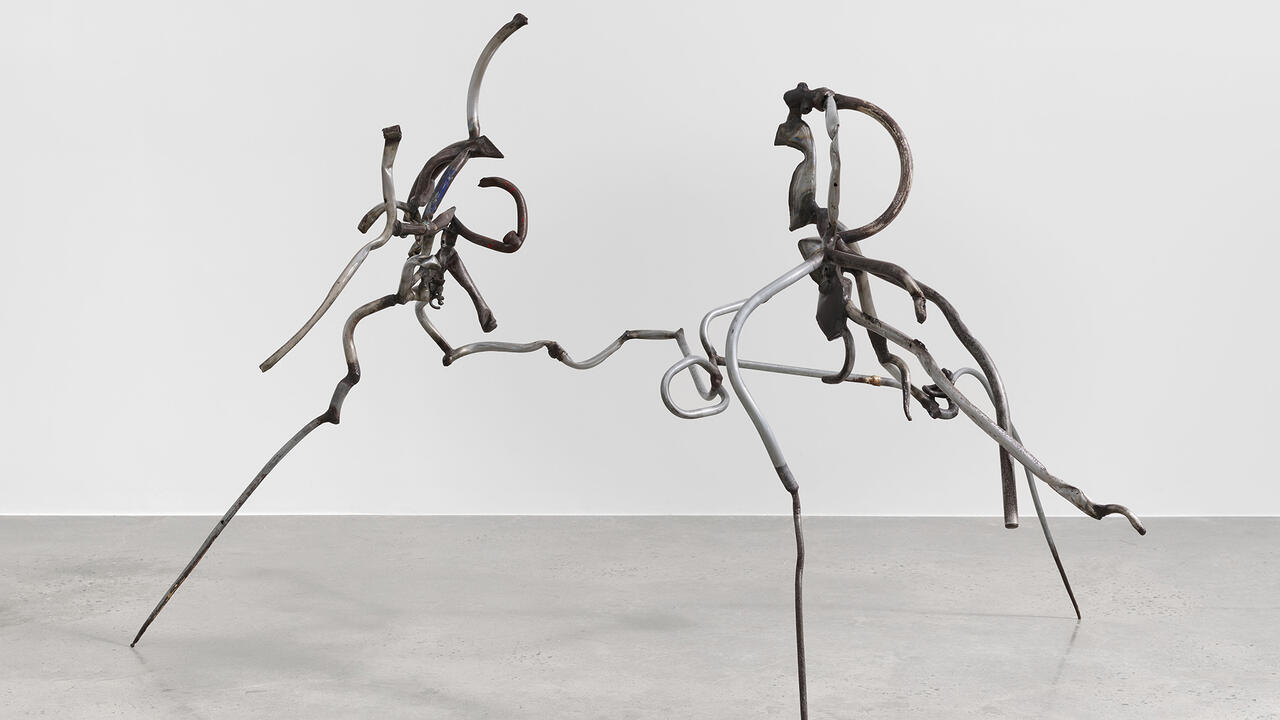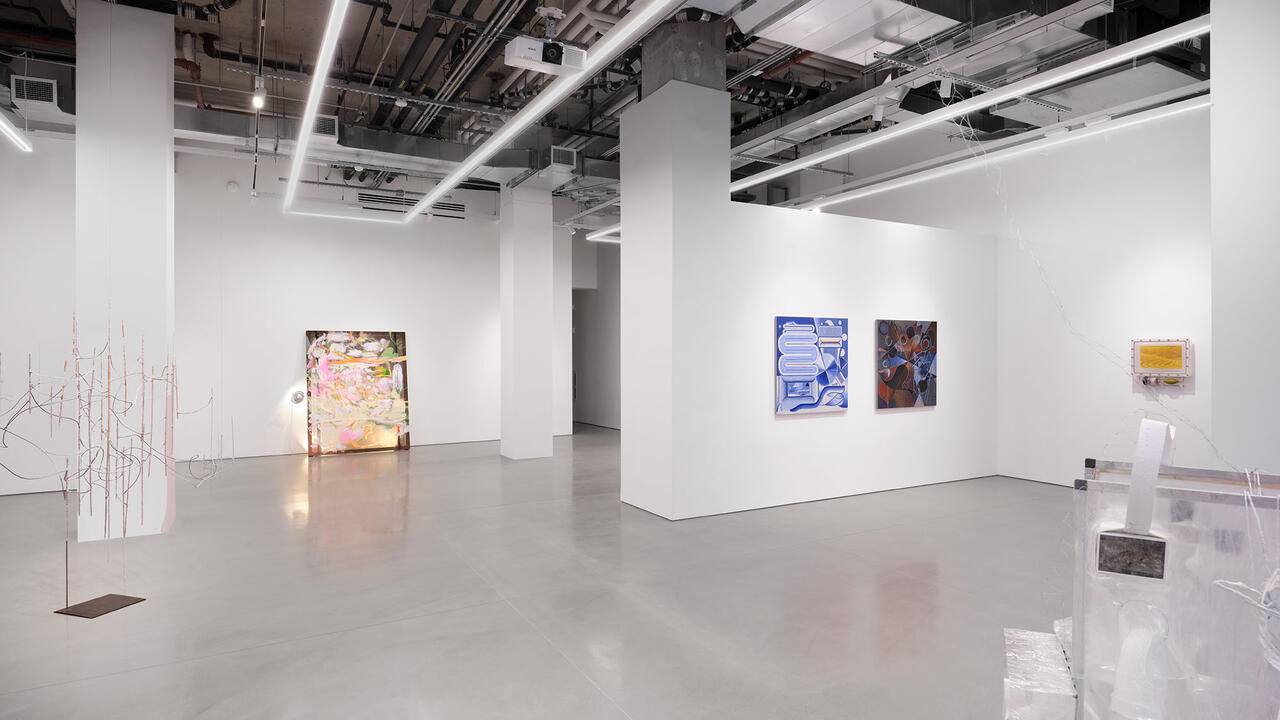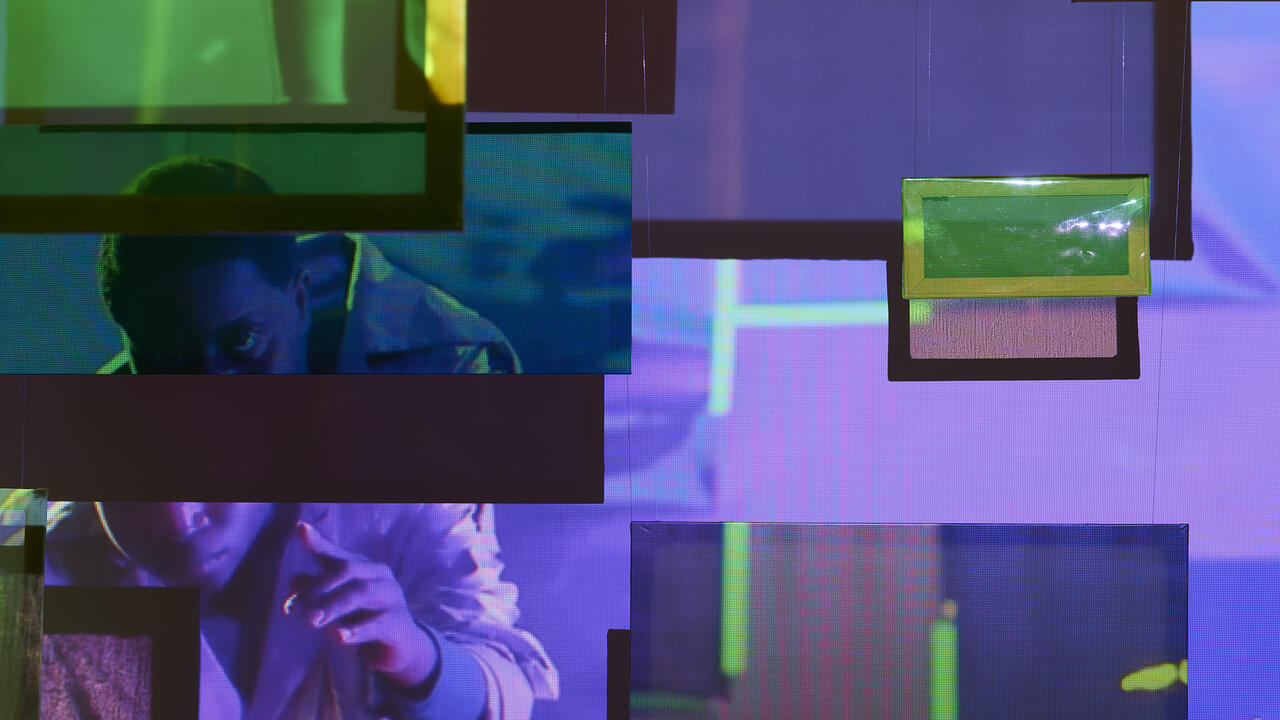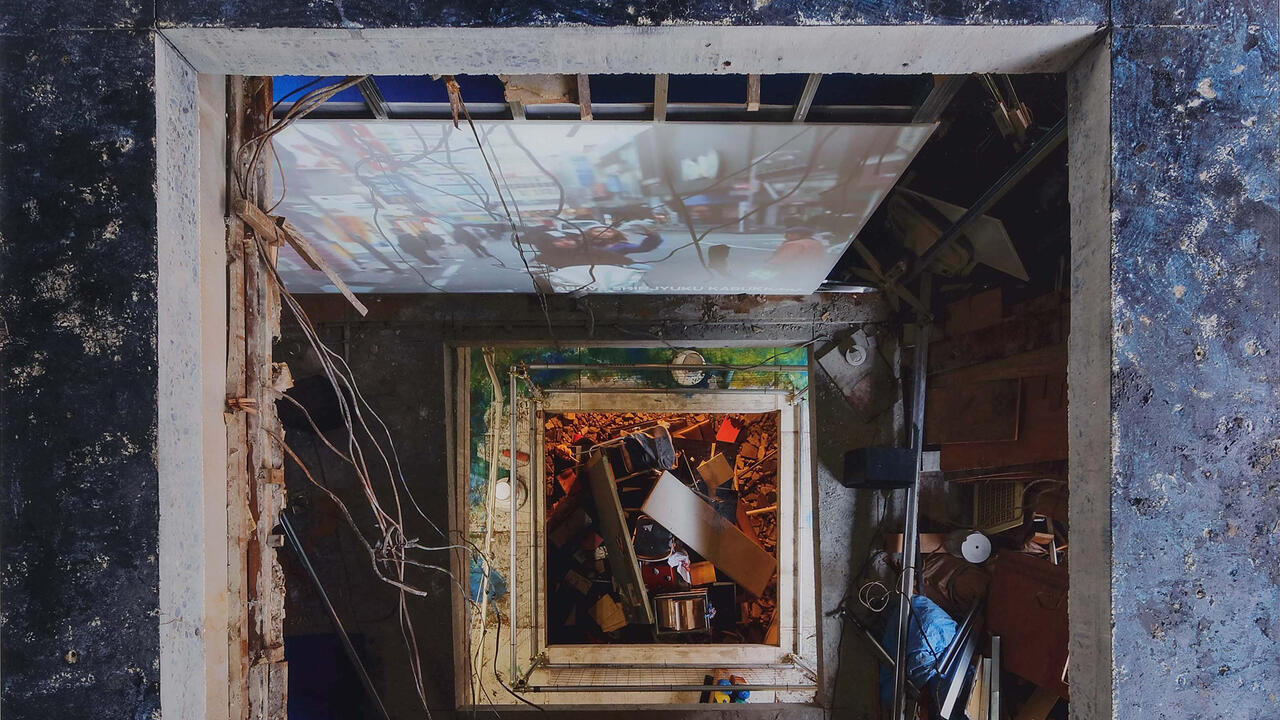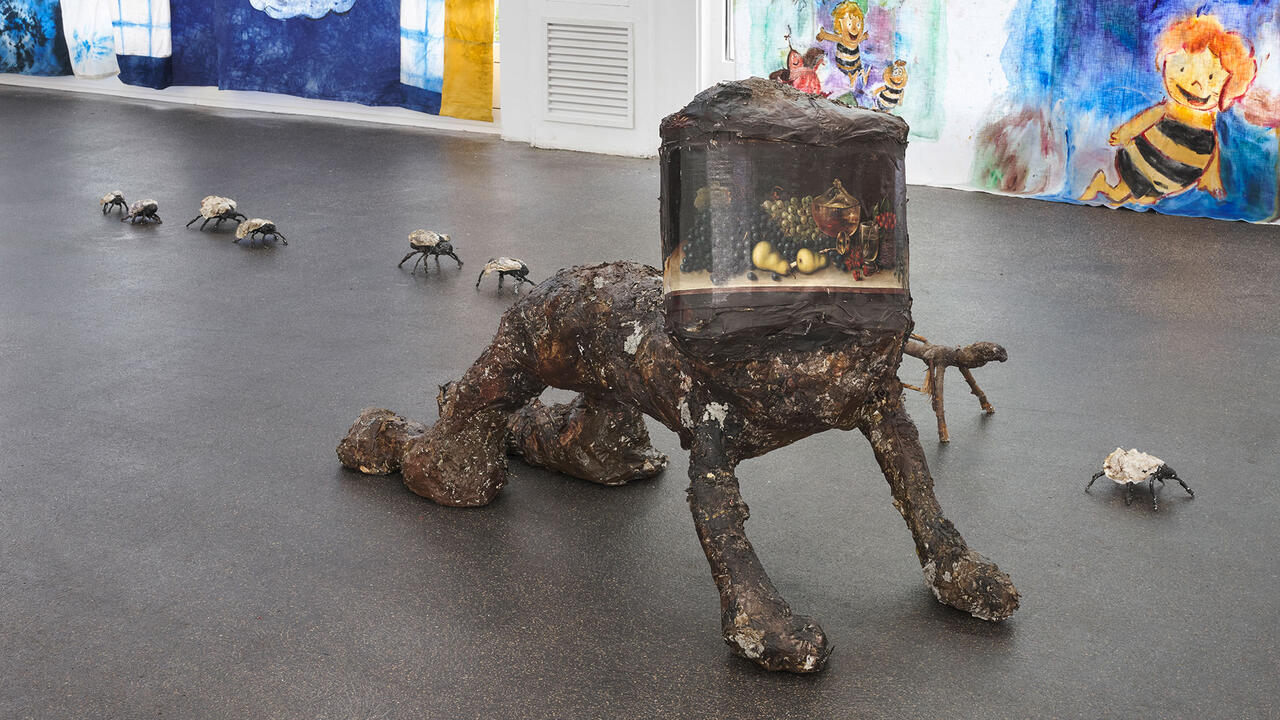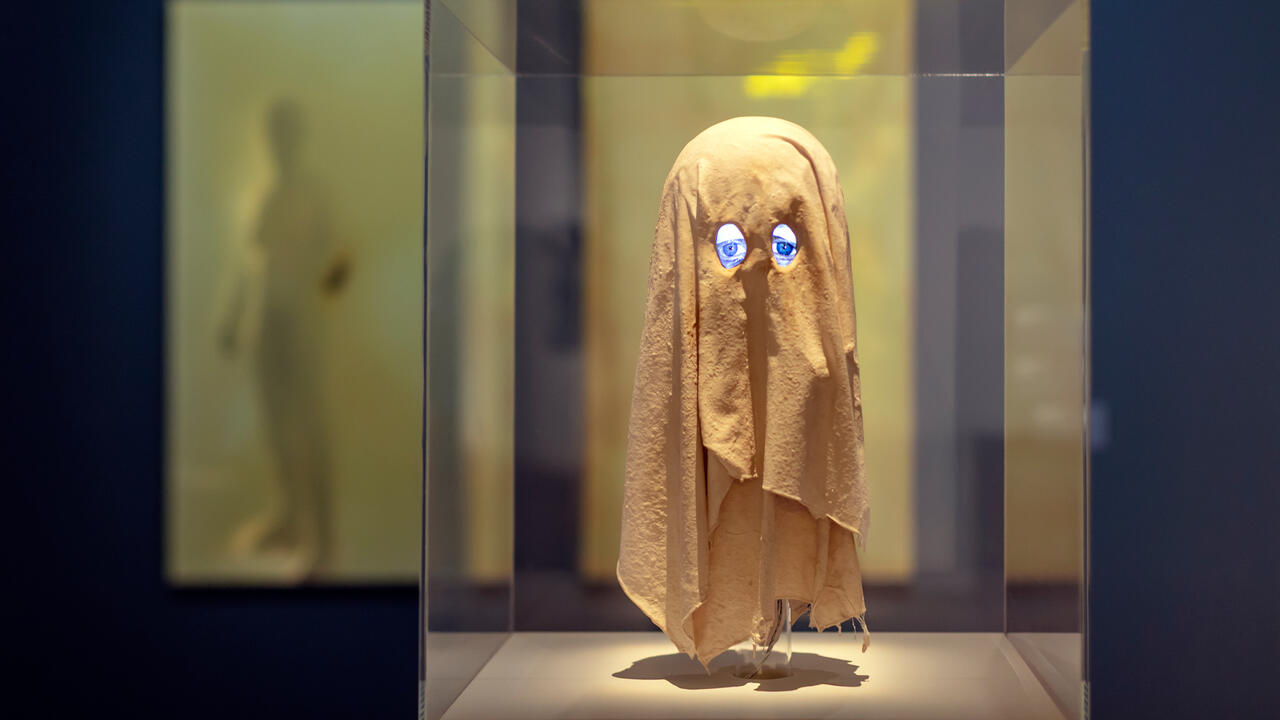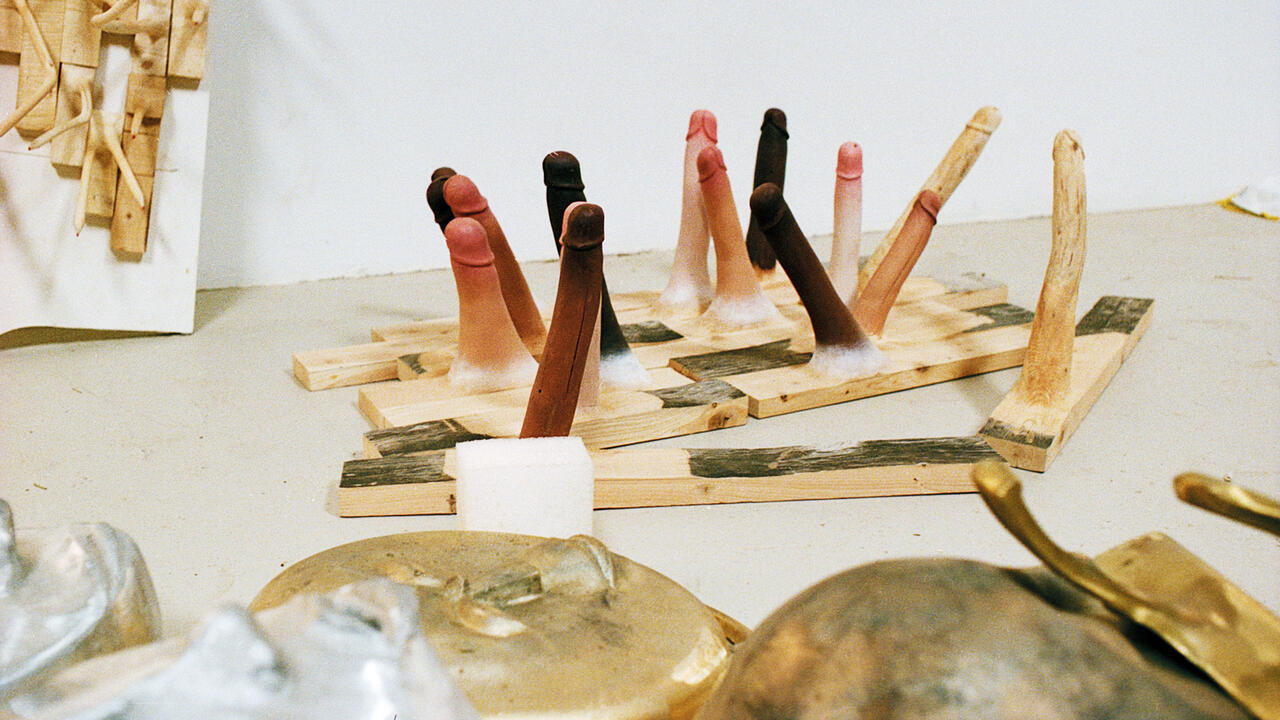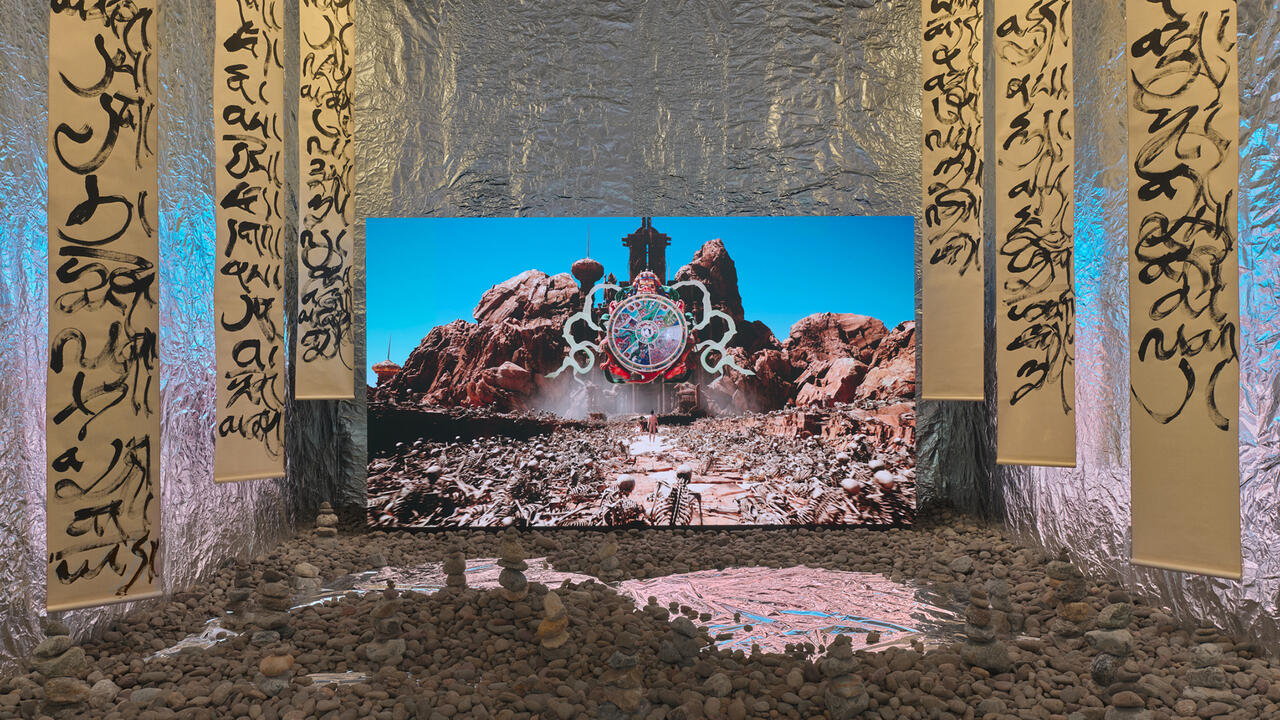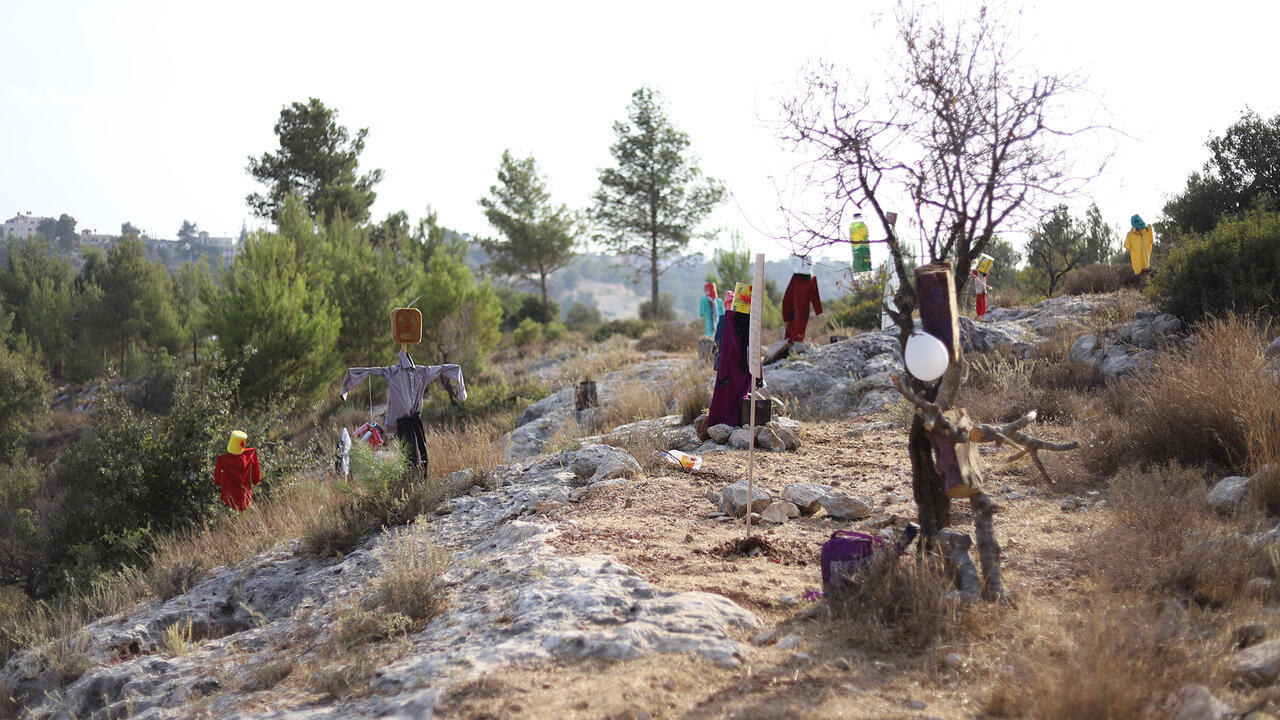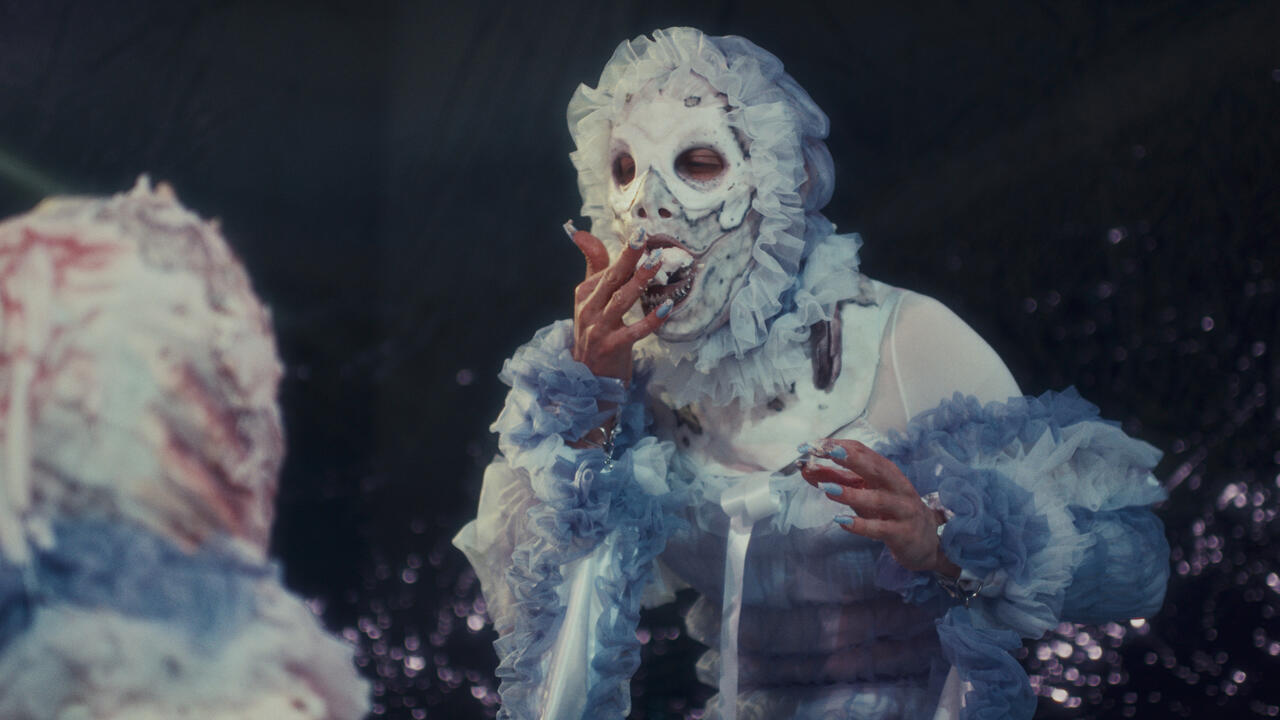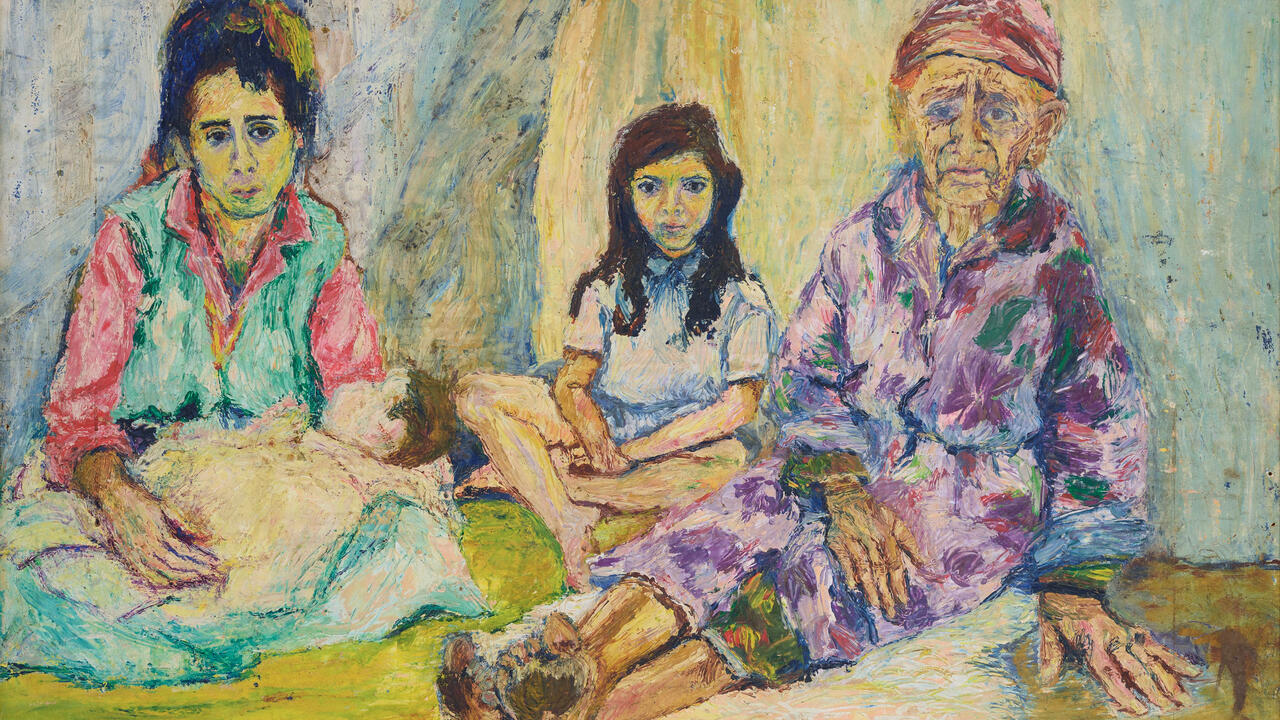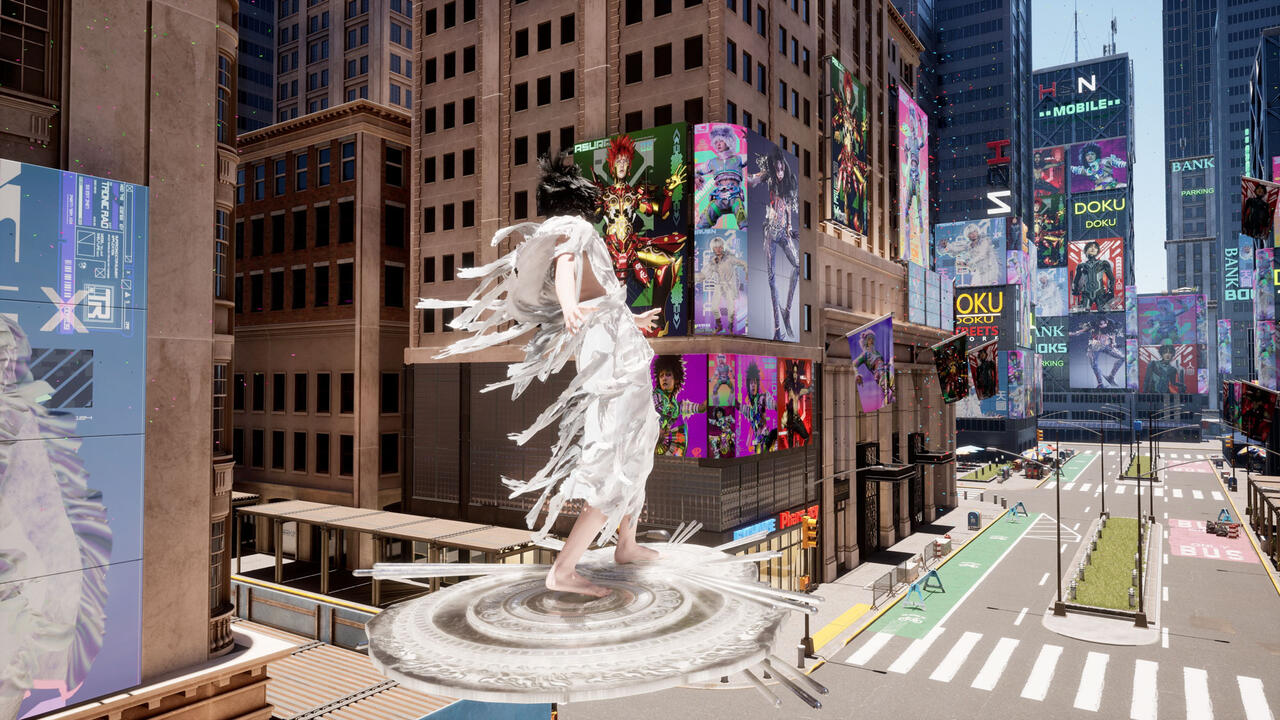Your Guide to the Best Shows to See in New York
Senior US Editor Andrew Durbin selects his highlights of the shows in the city during Frieze Week
Senior US Editor Andrew Durbin selects his highlights of the shows in the city during Frieze Week


Cici Wu, ‘Upon Leaving the White Dust’
47 Canal
18 April – 27 May
The Korean-American artist and novelist Theresa Hak Kyung Cha once described memory ‘as a collective source, as almost having physical and organic dimensions … It represents a body of time […] within which our existence is marked like a wound.’ At the time of that writing – which artist Cici Wu quotes extensively in the press release to her show ‘Upon Leaving the White Dust’ – Cha was attempting to finish her 1980 film White Dust from Mongolia, with her brother James in South Korea. Neither the film nor its accompanying novel was completed when a New York City security guard raped and murdered Cha in 1982. In Wu’s astonishing exhibition – her first solo show at 47 Canal – the artist returns to Cha’s unfinished work in a melancholy installation and film that presents, as homage, the wounds left by memory and time.
Wu’s show features small, mostly white, plaster-cast objects arranged in a grid on the gallery’s blonde wood floor: hands posed atop one another, bare feet, a mop, a train’s locomotive car, Lehmann Gross Bahn train tracks, an airplane and small, globular lights that pulse faintly in the half-dark. The objects are partially lit by a stark white film which fluctuates in brightness based on light data collected from Cha’s White Dust. In the dimly lit gallery, one might be tempted to first refer to the space as ‘dreamy’ or ‘dream-like’. It isn’t. Instead, Wu’s pieces crackle with the presence of history and the obscure mysteries that lie within them. ‘Upon Leaving’, with its ‘plurality of entrances’, as Wu writes, recalls Freud’s interpretation of the uncanny as the familiar which the subconscious has made unfamiliar. Here, world-historical narratives have plunged into small objects, endowing them with pasts – and futures – the present has scrambled to suppress.

Julia Phillips, ‘Failure Detection’
MoMA PS1
15 April – 3 September
In Julia Phillips’s first solo museum exhibition, we catch a glimpse, in the abstract, of the brutal intersection of our lives with various medico-industrial structures that have tightened around modern life. Poles, large screws, tables, all redolent of hospital décor, stand or lie upon tile floors. Ceramic casts of body parts – faces, bellies and the female pelvis – hang from crude metal frameworks nailed into those tiles or hang upon the museum’s walls. The exhibition’s three rooms at once suggest a gruesome torture centre as much as they do an operating room under the tenure of some Salvador Dalí-inspired doctor (here faces and flesh lie where once he might have hung a clock), they also recall the explicit photography of Robert Mapplethorpe, as in Extruder (#1) (2017), in which the dark purple cast of a mouth swallows a pole; behind that face, a cast of an ass – with a gaping hole for an anus – extends upward on a metal wishbone. Gone is what’s between: us. What’s left is all there is: system. But Phillips exceeds Mapplethorpe in her own stark assessment of the body’s sex and shapeliness, as well as the biopolitics that determine their place (read function) in the world; her austere sculpture disentangles our parts from their whole to emphasize that, for fleeting flesh, only representation lasts.

Charles Atlas, ‘the past is here, the futures are coming’
The Kitchen
28 March – 12 May
At the Kitchen, two new video installations by Charles Atlas – 2003 and The Years (both 2018) – consider the way particular moments in time are registered in film, through found footage from television in 2003 overlaid with video portraits of Atlas’s peers (Eileen Myles, Yvonne Rainer, etc.), or re-imagined in some projected future, in The Years. Atlas has long been interested in reception, nostalgia and the plurality of presents – as well as queer futures – that compose our experience. See, for example, his much loved 2015 exhibition at Luhring Augustine, ‘The Waning of Justice’, which featured drag performer Lady Bunny in lengthy, freewheeling monologue about the grim state of the present. (Had she known of what was to come only a year later! Or did she?) In these new works, Atlas once again presents a colourful, candid, decidedly queer take on our image-clogged political and social universe, beginning with the year President George W. Bush dragged us into Iraq and ending in a ‘video graveyard’ in the distant future. Atlas has also programmed a concurrent variety programme at the Kitchen, ‘The Kitchen Follies’ (3–12 May), featuring the filmmaker’s new and long-time collaborators. Composer Jodi Melnick and performer Julianna Barwick will present a new collaborative work, as will Laurie Berg and the Illustrious Blacks (3–5 May only). Atlas, who has always worked in concert with artists and communities, both directly and indirectly, has held up a world of art (contra ‘the art world’) for decades – bringing together elements of nightlife, poetry, dance, music and drag into one glittering New York shindig. Whatever the future holds, we can at least take some comfort in living in a present alongside Charles Atlas.

Marlene Dumas, ‘Myths & Mortals’
David Zwirner
28 April – 30 June
In ‘Venus & Adonis’, one of Shakespeare’s few long poems, Venus becomes impatient with the hunter Adonis – the child of a tree – for refusing to kiss her. She is tormented by his indifference, and in turn by her own immortality, for she suspects his apathy is because she is a god and not a woman. No matter, for soon Venus finds Adonis’s purple corpse in the woods, slain by a boar. His death produces a single flower, coloured the same as Adonis’s flesh, that Venus weeps over. Such are the cruel symmetries that define the ancient world. In her first New York exhibition in eight years, Marlene Dumas has illustrated this poem – and the moody emotionality of those symmetries – in numerous paintings on canvas and paper (all ranging widely in size), each in her eerie, watery style. Dumas depicts Venus as a pleading figure, as the titles of her ink wash drawings (each slightly larger than the size of an A4 paper) of the god make clear: Venus pleads, Venus forces, Venus insists (all 2015–16). Paintings and drawings from 2018 continue Shakespeare’s themes without explicitly illustrating the poem, including pregnant bodies, kissing couples, an iPhone, nipples and so on. In these cloudy, pretty pictures, Dumas recasts Venus’s complaint of representation as ‘lifeless, cold and senseless stone, / well-painted idol, image dun and dead’ as its best asset in capturing the god’s stark loss of her mortal lover to nature’s brainless and bloody aggression.

Carroll Dunham
Gladstone Gallery
20 April – 16 June
In Carroll Dunham’s new, untitled exhibition at Gladstone Gallery, paintings of nude, hunky wrestlers – their muddy bodies stained with blood, their anuses stylistically prolapsed, their dicks notably flaccid – engage in manly struggle across rural landscapes. Following the artist’s utopic, 2015 series of women bathers, these men would have nothing to do with such peace; here, in canvases that glow as if made in Crayola marker, Dunham has infused his subjects with a comic, self-annihilating masculinity. In Green Hills of Earth (3) (all works 2017), two men hold their clubs above one another, ready to strike their enemy down. In the series ‘Left for Dead’, corpse-grey men lay on the grass, their black hair splayed before us, in mortal defeat or, perhaps, exhaustion. (Has he dispatched his enemy, or has he himself been dispatched?) The promise of peace appears just once in the exhibition, in Mud Men, which shows the men holding hands in a brown lake, their backs to the viewer, their rears quite plump. The painting – its figures roughly human-scaled – hangs down a long hall at the centre of the gallery, far from the rest of the exhibition, as if only a dream, or fantasy, of rapprochement. In other works, ominous, oversized black birds hover in the air or land upon their chests, strange signs of some possessive afterlife, lingering like fate.

Miyoko Ito, ‘Heart of Hearts’
Artists Space
7 April – 6 May
This year marks the centenary of Miyoko Ito’s birth, on 27 April 1918, in Berkeley, California. In a perfect world, this date would have received more attention than it did, with celebrations of this unjustly under-known painter’s curious, abstract paintings, made mostly when she was living in Chicago and rarely shown outside that city. ‘Heart of Hearts’ builds on a concurrent retrospective exhibition ‘Matrix 267’ at the University of California’s Berkeley Art Museum, and takes a closer look at Ito’s work from the 1970s and early-’80s, near the end of her life. (The artist died in 1983.) Working around the time of Chicago Imagism, Ito’s paintings nod to the group’s design-y, humorous tableaux while providing a more sombre, challenging visual cosmology of ovular and cylindrical shapes arranged like slatted furniture, walls and suggestive windows that view some southwestern dream world, in desert reds, yellows and oranges. The paint is thinly applied to canvas, which, at Artists Space, are sometimes torn at the seams – likely, it seems, from lack of care on the part of a collector than from the artist’s intention. Nails are driven only partially into the stretcher bars, and jut starkly out of the sides of some paintings, as in Todoroki (1974). While each painting (varying in size; averaging around 50 x 50 cm) is an unmistakable masterpiece, the connections they attempt to bridge between an outside and an inside, furniture and room, room and house, house and world feel necessarily incomplete, blurred, undone. This suggests there is more to be imagined.

Paul Bonet, ‘Drawings for Bookbindings’
Galerie Buchholz
4 May – 16 June
The French bookmaker Paul Bonet (1889–1971) is largely unknown in the US. He has no English-language Wikipedia page, though his drawings for book covers, endpapers and binding patterns, are in the collection of the Morgan Library and other prominent US institutions. This week, Galerie Buchholz opens ‘Drawings for Bookbindings’, an exhibition compiled by the Austrian artist Florian Pumhösl, providing a rare chance for US audiences to encounter a selection of this enigmatic artist’s work. While the show has yet to open as of this writing, we can expect that it will showcase the intricacies of Bonet’s abstract drawings, which were regularly used by the legendary French publisher Gallimard in the mid-century, from his curvy mandalas and ribbony lions’s faces to dazzling, almost cosmic plant life. Or, perhaps, we’ll find a new Bonet ferreted out of the archive – as German visitors did in the gallery’s Cologne venue in 2013, with another Bonet exhibition organized by Pumhösl. In either case, taking ample inspiration from this French cosmologist, I hope Buchholz inaugurates a new generation of Bonetistas among New York’s poets, artists and bookmakers.
For more shows to see in New York during Frieze Week head over to On View


